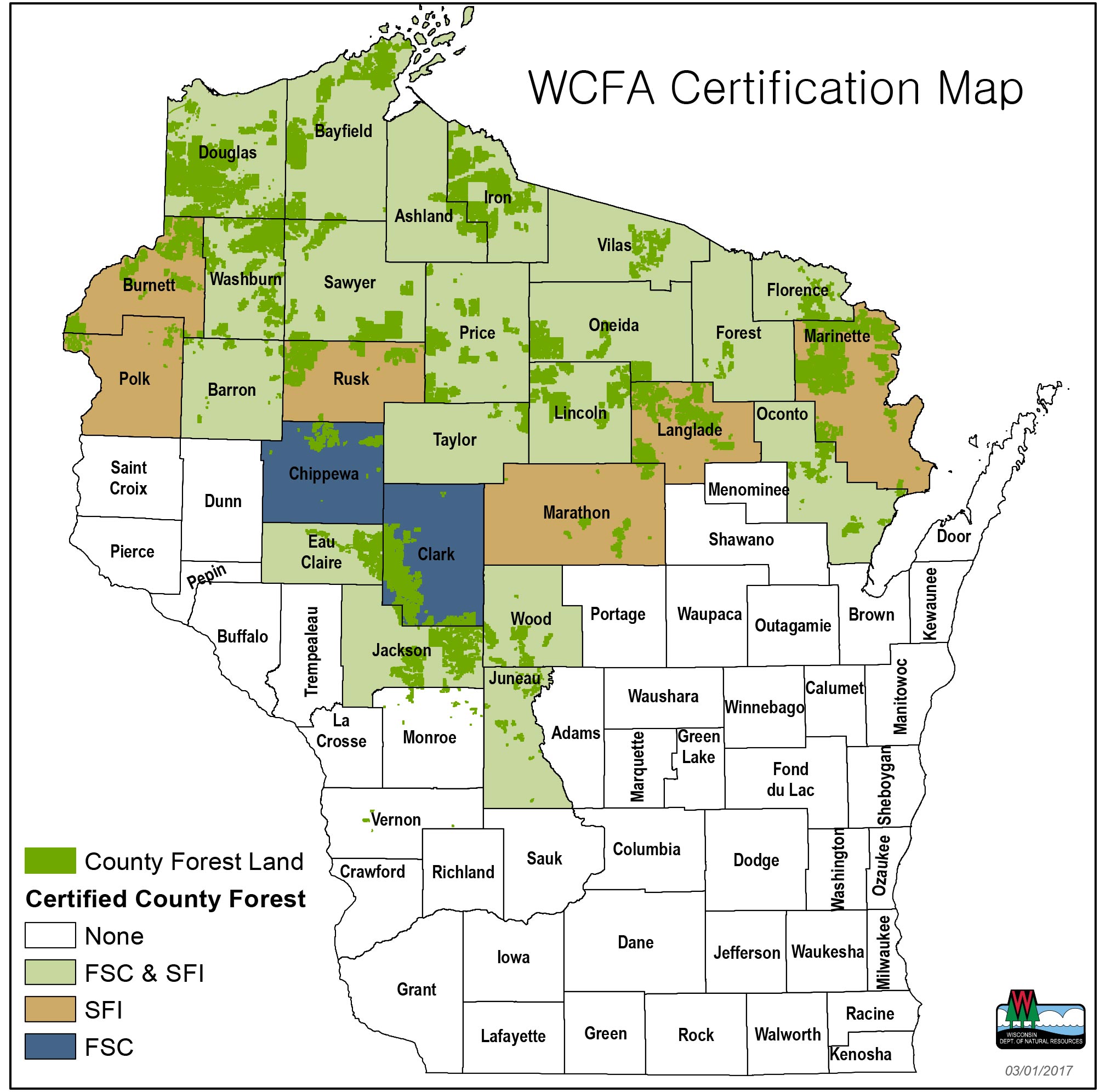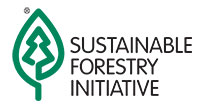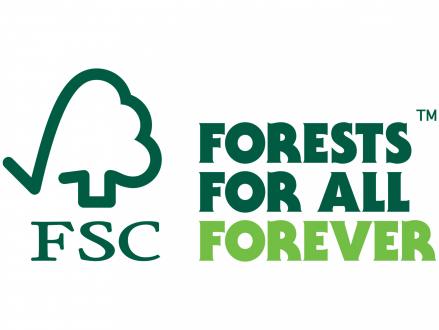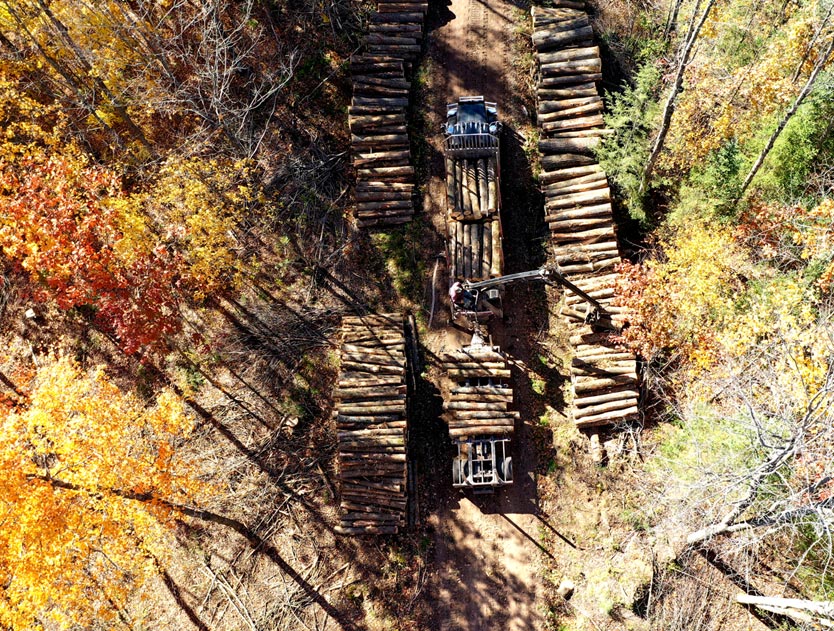Providing leadership to the county forest program ensuring long-term forest health and sustainability
Timber Management
Did you know Wisconsin is the #1 producer of paper and wood manufacturing in the nation? Forest products is also the 2nd largest industry in the State, supporting over 64,000 jobs and contributing over $24 billion annually to the economy.
Active timber management of our county forests is essential to the health and success of our forests, local economies and the State’s forest products industry. The Counties by far supply the most raw material and revenue returned of any public agency in the State. Collectively, over the past decade, County Forests have averaged over 18 million board feet and 770,000 cords harvested annually. Stumpage revenue in fiscal year 2018 returned roughly $45 million back to the counties and towns.
For specific information on a County’s Timber Sale Prospectus or Results >
Forest Certification
 Since 2004, 27 of Wisconsin’s County Forests have exceeded the standards of the Sustainable Forestry Initiative® (SFI®), and/or the Forest Stewardship Council® (FSC®). SFI and FSC are two of the most widely recognized forest certification systems in North America. Certification stamps on forest products inform buyers and consumers that their purchased goods are produced through sustainability managed and harvested means.
Since 2004, 27 of Wisconsin’s County Forests have exceeded the standards of the Sustainable Forestry Initiative® (SFI®), and/or the Forest Stewardship Council® (FSC®). SFI and FSC are two of the most widely recognized forest certification systems in North America. Certification stamps on forest products inform buyers and consumers that their purchased goods are produced through sustainability managed and harvested means.
Representatives of third-party audit firms conduct annual evaluations to determine if forests are being sustainably managed according to strict environmental, social and economic standards. County forests consistently receive high marks for integrating forest and wildlife management while protecting high conservation values all in a framework of cooperation with the Wisconsin Department of Natural Resources and with public involvement.
Wisconsin DNR provides important technical support for planning, forest health, forest products, hydrology, and ecology including protection of endangered resources. They also hold the group certificates for the 27 participating counties and all but the smallest county forests are group members.
The focus of the Wisconsin County Forests to ensure the long-term health and sustainability of forest ecosystems while providing benefits to the public is well aligned with forest certification standards. Primary objectives of these forests include timber management, recreational opportunities, wildlife habitat improvement and watershed protection.


Economic Impact
 Wisconsin’s County Forests continue to be an important contributor to Wisconsin’s economic health. Forestry is the #1 employer in 10 counties and is #1 in output in 14 counties. Products from these forests generate over $39 million annually in timber sale revenue for the counties and townships encompassing these lands and are a significant contributor to Wisconsin’s $24 billion timber industry. County Forests are also statutorily required to return 10% of their gross timber revenue to the towns in which their lands lie, though some counties elect to go above and beyond that. County Forests help sustain over 63,000 full-time jobs in the forestry, logging, trucking, paper, manufactured building materials and lumber sectors. Many other jobs are created in associated businesses such as a large printing industry in southern Wisconsin. Every ten jobs in the forest products industry supports an additional fifteen jobs in other sectors around the State.
Wisconsin’s County Forests continue to be an important contributor to Wisconsin’s economic health. Forestry is the #1 employer in 10 counties and is #1 in output in 14 counties. Products from these forests generate over $39 million annually in timber sale revenue for the counties and townships encompassing these lands and are a significant contributor to Wisconsin’s $24 billion timber industry. County Forests are also statutorily required to return 10% of their gross timber revenue to the towns in which their lands lie, though some counties elect to go above and beyond that. County Forests help sustain over 63,000 full-time jobs in the forestry, logging, trucking, paper, manufactured building materials and lumber sectors. Many other jobs are created in associated businesses such as a large printing industry in southern Wisconsin. Every ten jobs in the forest products industry supports an additional fifteen jobs in other sectors around the State.
In addition to wood products, the forests managed by these 30 counties provide an important land base for Wisconsin’s tourism industry. Tourism, largely due to outdoor recreation, is the #1 industry in 8 of our member counties, and top 5 in 27 counties. Wisconsin’s County Forests provide more than 6,000 miles of snowmobile, ATV/UTV, skiing and hiking trails and forest roads along with a wealth of hunting, fishing, camping, and boating opportunities. County Forests attract tourists to Wisconsin and tourism spending helps support many state and local businesses.
For more detailed economic facts on the Wisconsin Forestry Industry visit Forestry and the Wisconsin Economy >
